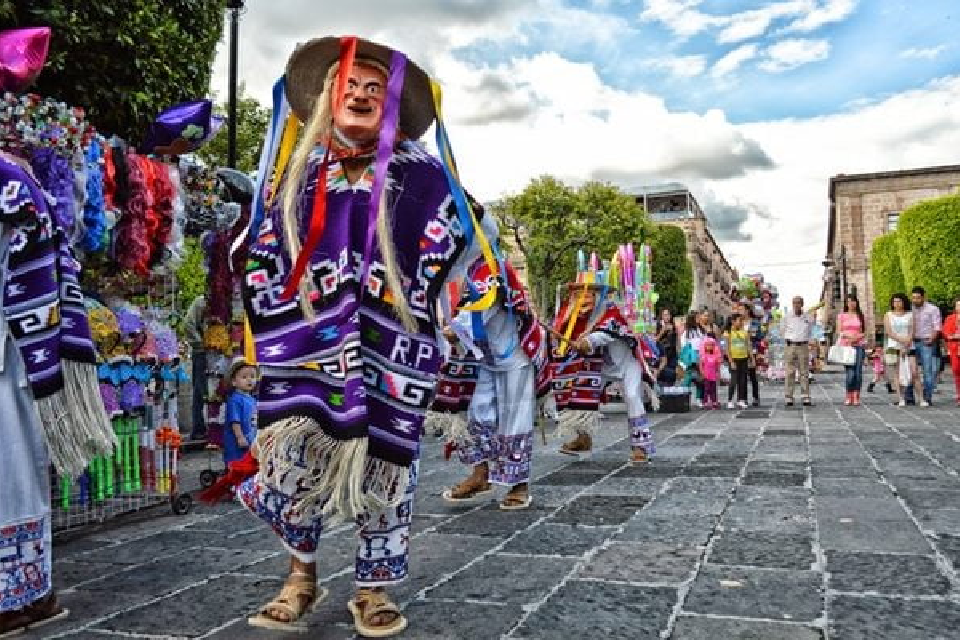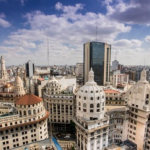Si necesitas el pretexto perfecto para descubrir Latinoamérica y el Caribe, no busques más: aquí te presentamos doce tradiciones culturales que encapsulan toda la algarabía, diversidad y riqueza de nuestra región. ¡Toma nota y vívelas a lo largo del año!

Enero: Carnaval de Negros y Blancos en Colombia
Comenzamos el año y nuestro listado de costumbres y tradiciones con el Carnaval de Negros y Blancos de San Juan de Pasto, Colombia, declarado Patrimonio Cultural Inmaterial por la Unesco en 2009.
Este festejo arranca el día 28 de diciembre y termina el 6 de enero; sin embargo, las fechas más emblemáticas corresponden a los dos últimos días del festejo, cuando los habitantes del poblado se pintan la cara de blanco y negro para representar la hermandad entre etnias y promover un sentimiento de tolerancia y unión.
Febrero: Festival de Diablos y Congos en Panamá
El Festival de Diablos y Congos de Panamá se celebra en Portobelo, en la provincia de Colón. En ella, sus cientos de participantes se dividen en dos bandos: los congos, que representan a los esclavos africanos, y los diablos, símbolo de la opresión por parte de los colonizadores europeos.
Ambas agrupaciones hacen gala de su creatividad creando los más coloridos disfraces, los cuales portan con orgullo mientras danzan durante horas al ritmo del tambor: una escenificación de la lucha por la liberación.
Marzo: Fiesta de la vendimia de Curicó en Chile
Algo que diferencia a Chile de los países vinícolas del Viejo Mundo es que aquí las vendimias ocurren en marzo, mes en el que finaliza el verano austral.
Lo comprobarás en la ciudad de Curicó, en la Región del Maule, donde se dan cita los productores del valle para celebrar la cosecha, dar a conocer sus etiquetas e invitar a los visitantes a participar en la pisa de uva. Una verdadera fiesta de cuatro días amenizada por bandas de cueca, género musical típico.
Abril: Semana Santa cusqueña en Perú
Otro elemento que distingue a las costumbres y tradiciones religiosas de Latinoamérica es su fervor, y así se percibe en Cusco, antigua capital inca donde las celebraciones de la Semana Santa comienzan desde el lunes.
Ese día empieza la procesión del Señor de los Temblores, un Cristo muy venerado que es recibido con cohetes y tapices de terciopelo, colgados en los balcones de las casas, a medida que avanza por las calles de la antigua ciudad.
Mayo: Velorio de la Cruz de Mayo en Venezuela
El 3 de mayo se conmemora a la Santa Cruz en el calendario religioso católico, una fecha que adquiere especial significado en el oriente de Venezuela. Allí los habitantes de los estados de Miranda y Aragua suelen montar altares en lugares visibles de sus hogares, cuya protagonista es una cruz adornada con flores frescas y papel de colores.
Dependiendo de la comunidad, se puede ver a la gente festejando y compartiendo comida en las calles, al ritmo de alegres melodías.
Junio: Inti Raymi en Ecuador
Las costumbres y tradiciones del imperio inca aún son palpables en la región andina de Ecuador, y se ven de manifiesto en el Inti Raymi, un festival que se celebra a lo largo del país durante los días previos al solsticio de invierno, que en Sudamérica ocurre el 22 de junio.
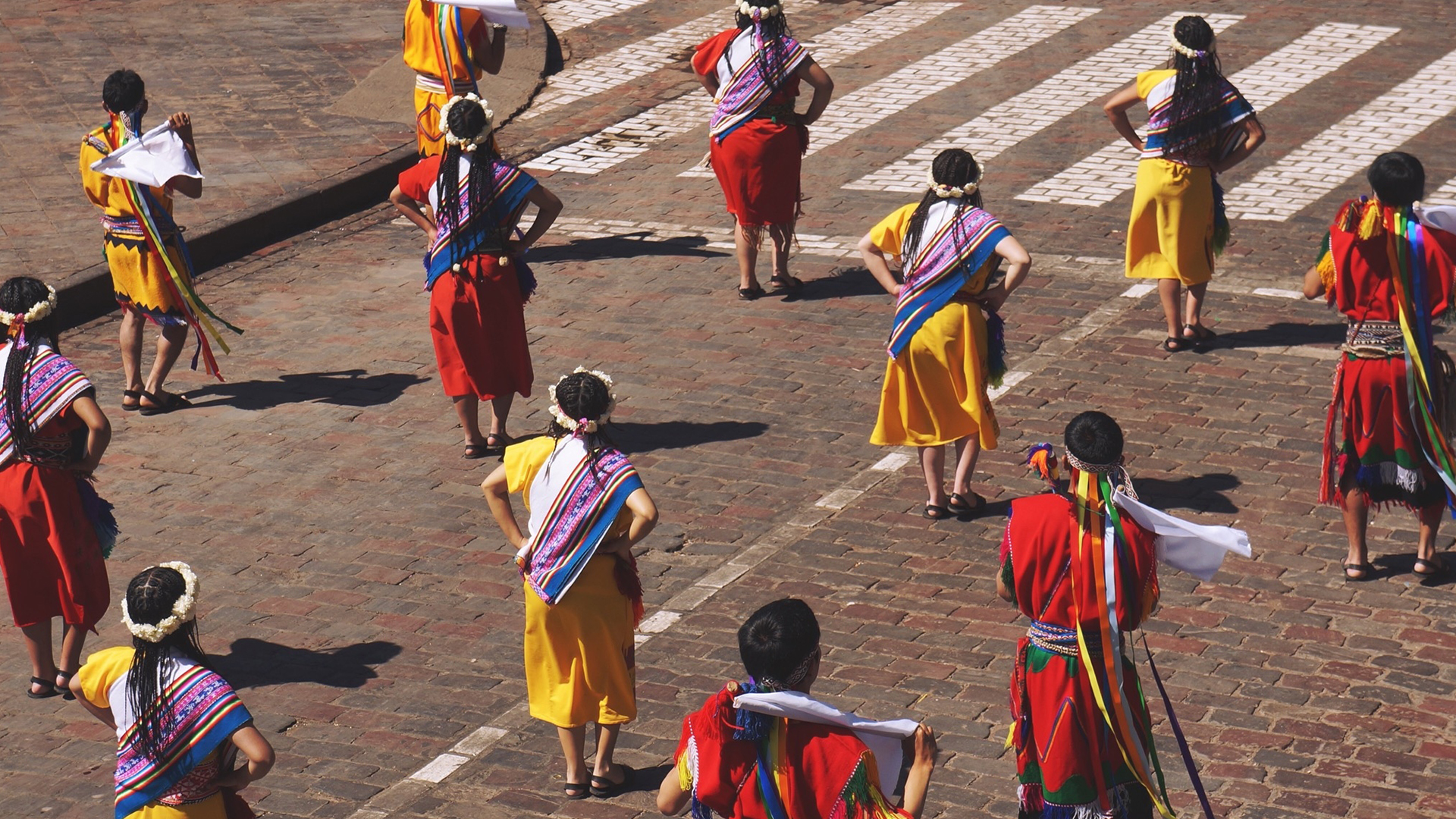
En él, se agradecen las dádivas del sol (personificado en la deidad inca Inti) a través de danzas, música y un ritual llamado la pampamesa, en el que se comparten alimentos típicos como el maíz, la papa, el cuy y la chicha.
Julio: Rabín Ajaw en Guatemala
Para conocer otra tradición cultural con fuertes raíces en la herencia indígena hay que viajar ahora a Guatemala, en especial a la ciudad de Cobán, departamento de Alta Verapaz, donde el último sábado de julio se congregan miles de personas para presenciar la elección de la Rabín Ajaw, “la hija del rey” en idioma q’eqchi.
Este título premia a aquella mujer maya de cualquier parte del país que demuestre ser la más inteligente y mejor conocedora de las costumbres y tradiciones de su comunidad.
Agosto: Festival y Mundial de Tango de Buenos Aires, Argentina
Si eres un apasionado del tango, la mejor época para disfrutarlo es agosto, mes en el que arranca el Festival y Mundial de Tango de Buenos Aires.
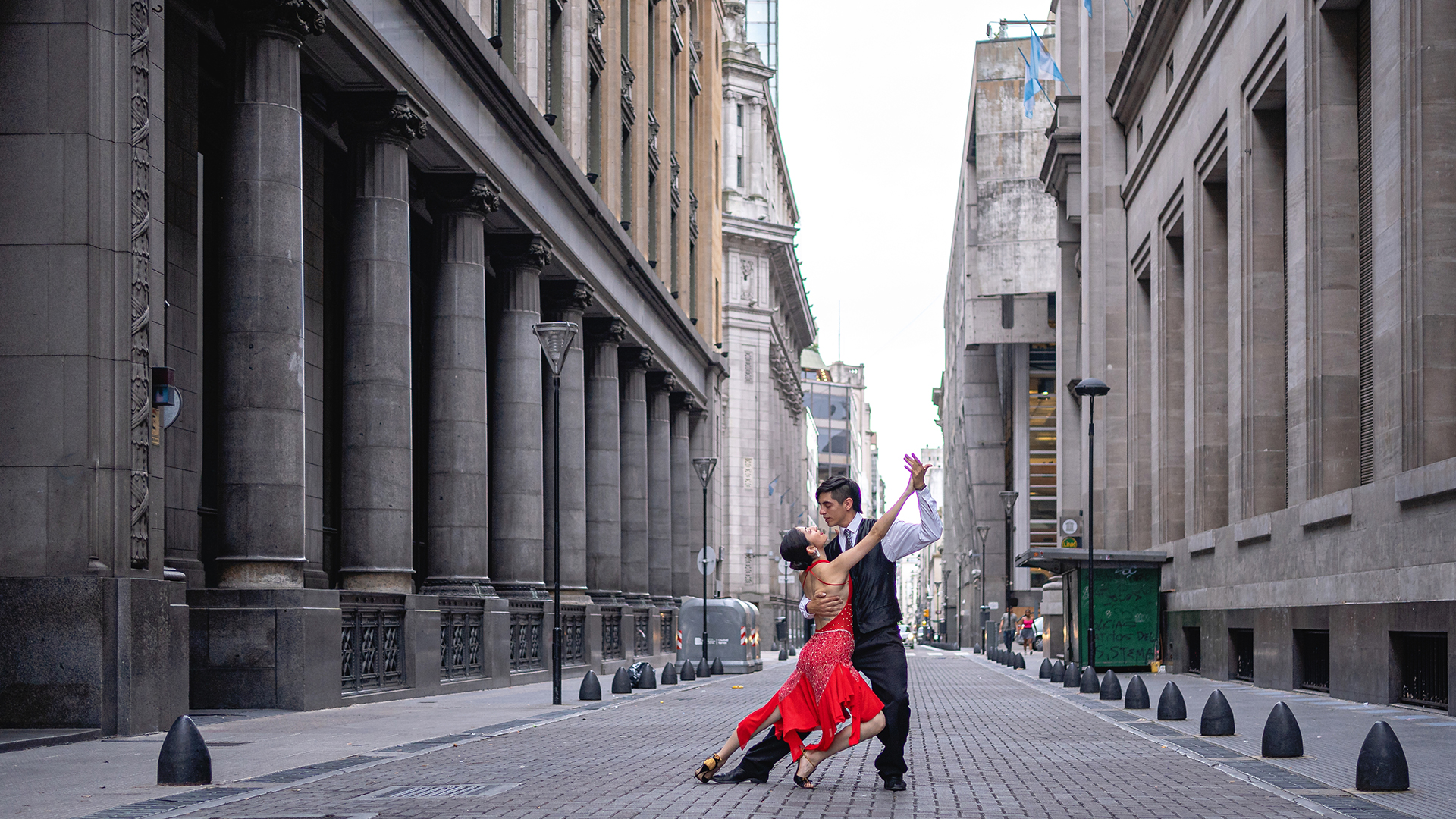
Durante 10 días, por las calles, museos, teatros, bares, cafés y milongas de la ciudad verás excelentes representaciones de este género musical y dancístico eminentemente porteño.
Septiembre: Fiestas Patrias en Costa Rica
Prácticamente todos los países de Centroamérica (salvo Panamá y Belice) festejan su independencia de España el 15 de septiembre, y entre los que lo celebran con más algarabía está Costa Rica.
Cada 13 de septiembre, es recibida en la frontera con Nicaragua una antorcha conmemorativa que simboliza este evento histórico, mientras que en la noche del 14 de septiembre cientos de niños salen a las calles para protagonizar el Desfile de los Faroles, una parada de corte civil porque Costa Rica no tiene ejército.
Octubre: Día de Muertos en México
Entre las múltiples tradiciones culturales que posee Mexico la más conocida a nivel mundial es el Día de Muertos, que aunque suele celebrarse desde finales de octubre tiene como punto culmen el 2 de noviembre.
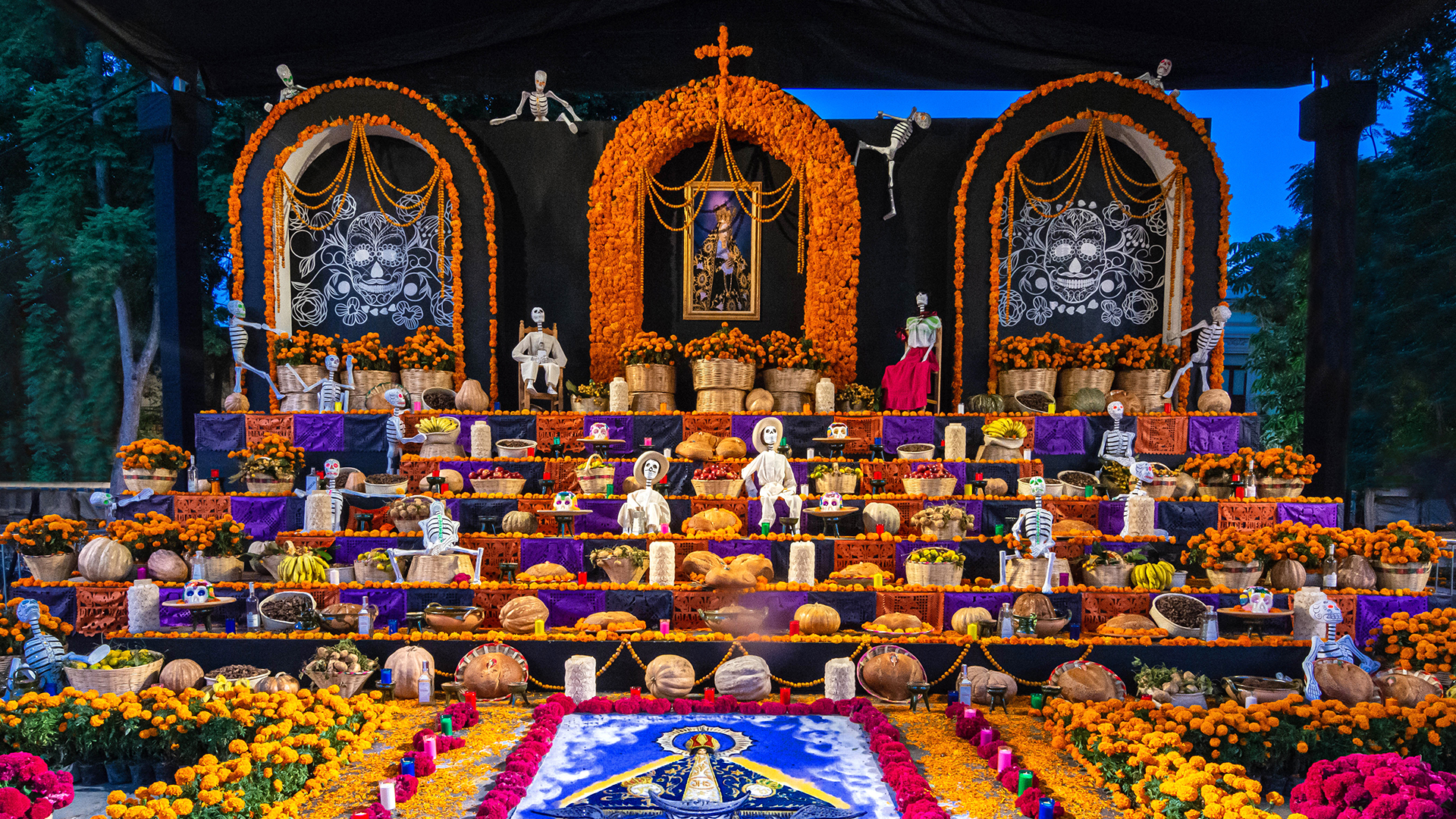
Este día, es costumbre que las familias se reúnan en las tumbas de sus seres queridos para montar altares con veladoras, flores de cempasúchil, la bebida y comida favoritas del difunto y alguna imagen religiosa, entre otros elementos.
¿El propósito? Agasajar a los espíritus que, según la tradición, vuelven del más allá para convivir con los vivos durante la noche más luminosa de México.
Noviembre: Pavochón de Thanksgiving en Puerto Rico
Por tratarse de un estado libre asociado a los Estados Unidos, Puerto Rico ha adoptado muchas costumbres estadounidenses, entre ellas el Día de Acción de Gracias o Thanksgiving Day.
Sin embargo, en contraste con el pavo con castañas que sirven los americanos, los boricuas adoban el pavo como si fuera un lechón (de ahí su nombre) y lo rellenan con toda clase de delicias locales, como mofongo de plátano, carne de cerdo y arroz con frijoles. Muy caribeño.
Diciembre: Reveillon en Brasil
Cerremos el año (y esta colección de tradiciones culturales) como se debe, al más puro y festivo estilo carioca.
En la ciudad brasileña de Río de Janeiro se acostumbra celebrar el fin de año y la llegada del nuevo año con una fiesta masiva llamada Reveillon, la cual se festeja en la playa de Copacabana al son de la música y bajo el destello colorido de miles de fuegos pirotécnicos.
If you need the perfect pretext to discover Latin America and the Caribbean, look no further: here we present twelve cultural traditions that encapsulate all the hubbub, diversity and richness of our region. Take note and live them throughout the year!

January: Carnival of Blacks and Whites in Colombia
We start the year and our list of customs and traditions with the Carnival of Blacks and Whites of San Juan de Pasto, Colombia, declared Intangible Cultural Heritage by UNESCO in 2009.
This celebration starts on December 28 and ends on January 6; however, the most emblematic dates correspond to the last two days of the celebration, when the inhabitants of the town paint their faces black and white to represent the brotherhood between ethnic groups and promote a feeling of tolerance and union.
February: Festival of Devils and Congos in Panama
The Festival of Devils and Congos of Panama is celebrated in Portobelo, in the province of Colón. In it, its hundreds of participants are divided into two groups: the Congos, who represent African slaves, and the devils, a symbol of oppression by European colonizers.
Both groups display their creativity by creating the most colorful costumes, which they proudly wear while dancing for hours to the rhythm of the drum: a staging of the struggle for liberation.
March: Festival of the grape harvest of Curicó in Chile
Something that differentiates Chile from the wine-producing countries of the Old World is that the harvests here take place in March, the month in which the austral summer ends.
You will see it in the city of Curicó, in the Maule Region, where the producers of the valley meet to celebrate the harvest, publicize their labels and invite visitors to participate in the grape treading. A true four-day party enlivened by cueca bands, a typical musical genre.
April: Cusco Holy Week in Peru
Another element that distinguishes the customs and religious traditions of Latin America is their fervor, and this is how it is perceived in Cusco, the ancient Inca capital where the Holy Week celebrations begin on Monday.
That day begins the procession of the Lord of the Earthquakes, a highly revered Christ who is greeted with rockets and velvet tapestries, hung on the balconies of the houses, as he advances through the streets of the old city.
May: Velorio de la Cruz de Mayo in Venezuela
On May 3, the Holy Cross is commemorated in the Catholic religious calendar, a date that acquires special meaning in eastern Venezuela. There the inhabitants of the states of Miranda and Aragua usually set up altars in visible places in their homes, whose protagonist is a cross adorned with fresh flowers and colored paper.
Depending on the community, people can be seen partying and sharing food in the streets, to the rhythm of cheerful melodies.
June: Inti Raymi in Ecuador
The customs and traditions of the Inca empire are still palpable in the Andean region of Ecuador, and are evident in the Inti Raymi, a festival that is celebrated throughout the country during the days before the winter solstice, which in South America occurs on June 22.

The traditions of the Inca empire are still palpable in the Inti Raymi. (Photo: Getty Images)
In it, the gifts of the sun (personified in the Inca deity Inti) are appreciated through dances, music and a ritual called the pampamesa, in which typical foods such as corn, potatoes, guinea pig and chicha are shared.
July: Rabbi Ajaw in Guatemala
To get to know another cultural tradition with strong roots in the indigenous heritage, you now have to travel to Guatemala, especially to the city of Cobán, department of Alta Verapaz, where thousands of people gather on the last Saturday of July to witness the election of the Rabín. Ajaw, “the king’s daughter” in the Q’eqchi language.
This title rewards that Mayan woman from any part of the country who proves to be the most intelligent and best acquainted with the customs and traditions of her community.
August: Festival and Tango World Cup in Buenos Aires, Argentina
If you are passionate about tango, the best time to enjoy it is August, the month in which the Buenos Aires Tango World Cup and Festival starts.

For 10 days, through the streets, museums, theaters, bars, cafes and milongas of the city you will see excellent performances of this eminently Buenos Aires musical and dance genre.
September: National Holidays in Costa Rica
Practically all the countries of Central America (except Panama and Belize) celebrate their independence from Spain on September 15, and among those that celebrate it with more fanfare is Costa Rica.
September: National Holidays in Costa Rica
Practically all the countries of Central America (except Panama and Belize) celebrate their independence from Spain on September 15, and among those that celebrate it with more fanfare is Costa Rica.
Every September 13, a commemorative torch symbolizing this historic event is received at the border with Nicaragua, while on the night of September 14 hundreds of children take to the streets to star in the Lantern Parade, a parade of civil court because Costa Rica has not army.
October: Day of the Dead in Mexico
Among the multiple cultural traditions that Mexico has, the best known worldwide is the Day of the Dead, which, although it is usually celebrated from the end of October, has as its culmination point on November 2.

On this day, it is customary for families to gather at the tombs of their loved ones to set up altars with candles, cempasúchil flowers, the deceased’s favorite food and drink, and a religious image, among other elements.
The purpose? Celebrate the spirits that, according to tradition, return from beyond to live with the living during the brightest night in Mexico.
November: Thanksgiving Turkey in Puerto Rico
Being a free state associated with the United States, Puerto Rico has adopted many American customs, including Thanksgiving Day.
However, in contrast to the turkey with chestnuts that the Americans serve, Puerto Ricans marinate the turkey like a suckling pig (hence its name) and stuff it with all sorts of local delicacies, such as plantain mofongo, pork and rice with beans. Very Caribbean.
December: Reveillon in Brazil
Let’s close the year (and this collection of cultural traditions) as it should, in the purest and most festive Rio de Janeiro style.
In the Brazilian city of Rio de Janeiro, it is customary to celebrate the end of the year and the arrival of the new year with a massive party called Reveillon, which is celebrated

